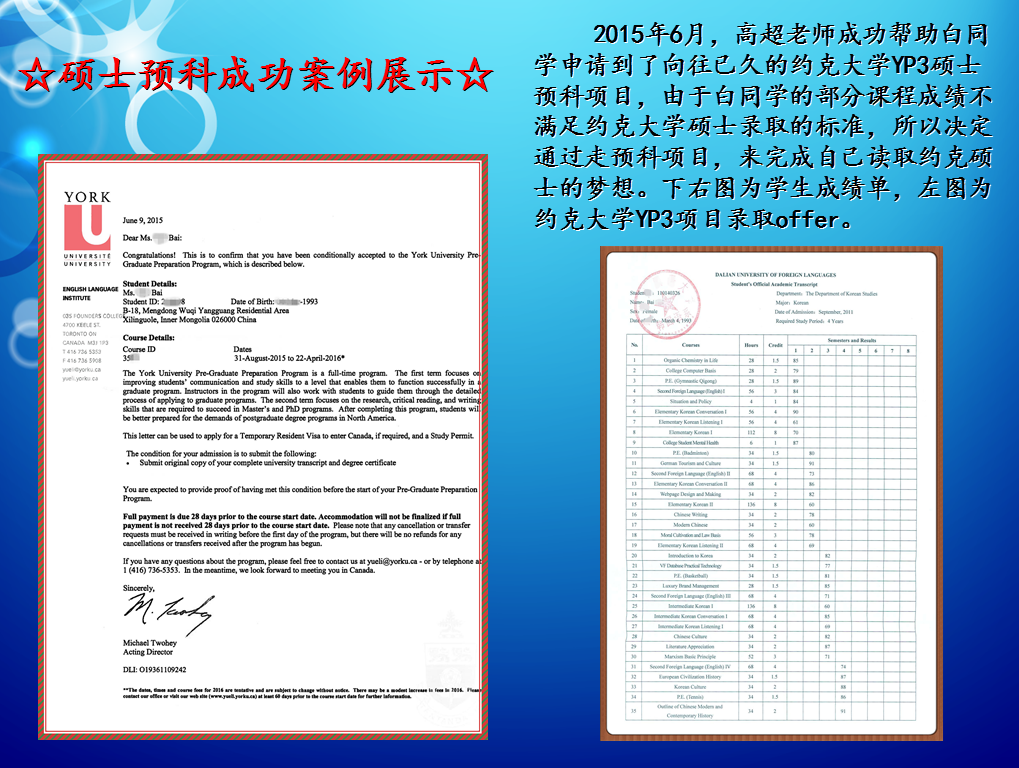GMAT阅读机经整理:加拿大好基友.
2017-08-10 358阅读
1月31日GMAT机经换库,现在整理2月份最新的GMAT阅读机经,目前是以原始稿为主,这篇主要是关于加拿大好基友的,考生朋友可以有选择的看看,希望给大家的备考带来一些帮助。
[V1]
枫叶国的两个好基友科学家G和N的故事
P1. 来自枫叶国的G发现了一个很神奇的现象:河水的形成是受当地植物影响的(貌似是,记不太清了)
P2. 这时,好基友N出现了。他们两个一起的发现加强了G的结论。
P3. 但是,有一小撮科学家发现了C现象。这个用G的结论怎么解释呢?
P4. 因此科学家们还需要再做进一步观察
[V2]
河和河床的变化。一屏半。两个加拿大的科学家。说的是虽然我们现在看到的河流是这样的,但是好多好多年前,才不是这个样子滴。第二段说500m年前如何如何,第三段说420m前发现的一个什么岩石能继续证明他们的观点是正确的。
问题:
主旨题我选的是(to provide evidences to support a claim)
[V3]
plant with root改变河流的形状,宽度,深度。。。 cambrian时期之后,发现了什么植物的化石还有河流的sediment的变化是同时发生的。
[V4]
有科学家说,植物对河流有影响,然后Oo科学家支持。按照套路接下来会反对,说有个阶段,sediment 怎么样的。噢第一段说了个Cambrian 时期怎么样的,那时候洪水冲击吧。第二段提了个P阶段这个阶段直接出题了
问题:每段关系是怎么样的
[V5]
还有个阅读是讲河流的形成的,说是河流会不会是受生长在其周围的植物影响,从而变宽变窄。举了在沉积物当中发现什么植物的化石之类的东西。第三段讲河流的这些变化也可能是受环境的影响。什么人类居住的原因。
[V6]
第二篇:加拿大的好基友,就是河床那个。
P1,加拿大的某个科学家提出了一个关于河床的在N年前如何形成什么什么的观点。
P2,第一句话就是说这个观点被另外一个科学家substantiate了,好像是这样单词,反正就是支持第一段。
P3,提出了以前的河流在没有植物在岸边还是什么的时候,一般都是很浅,很宽的。然后有了植物之后怎么怎么样。。。。
P4,最后一段,说着2个科学家还有一个问题需要研究。在某个地球的某个时期,植物曾经大范围灭绝了。然后他们想通过这个现象,去证明,如果植物灭绝以后,河流是不是有恢复到以前的那种又浅又宽的状态。
问题有问这个文章的结构,然后还有一些细节题。
[V7]
River形成那篇考了第三段作用,记得有fosill神马的让bank和什么的界限更清晰了
疑似原文:
If Not for Plants, Could Rivers Bend?
Geologists strengthen the case that early rooted plants engineered the look of modern rivers
Catherine Clabby
For decades, the Canadian geologist Martin Gibling has been intrigued by the tough-to-prove hypothesis that land plants created the shape of modern rivers hundreds of millions of years ago.
Plant roots reinforced the ground, the thinking goes, creating stable banks that funneled what once were wide, shallow water flows into narrower and deeper channels. By extension, that set the stage for lots of significant Earth history events, including the rise of human civilizations in modern river basins so many millennia later.
Now Gibling and postdoctoral scientist Neil Davies, both at Dalhousie University, have strengthened this case. When the pair compared a much-improved plant fossil record with evidence of how rivers changed very long ago, the transitions matched up.
“As soon as the plants got a foothold on land and rooted vegetation started, that changed the landscape. Basically plants engineered that landscape as they evolved,” says Davies. He and Gibling have published the findings in both Geology and Earth-Science Reviews.
Back in the Cambrian period, which ended some 500 million years ago, the geologic record indicates that rivers were very shallow but wide things, almost floods that allowed rainwater to wash from largely barren solid ground to sea. Deposits lt behind were preserved as sheets of coarse grains, some of which suggest these rivers were 1,000 or more times as wide as they were deep.
“There is probably nowhere on Earth where rivers form the way they did bore vegetation,” Gibling says.
But by the time of the Silurian- Devonian boundary, some 420 million years ago, the picture found in preserved sedimentary rock changes. The blankets of unconsolidated sediment found in earlier river deposits appear less frequently. It happens just as evidence of land vegetation with root systems also expands in the rock record.
In addition, more complex and diverse river remains emerge, including more traces of mud, probably due to the enhanced chemical weathering that plants assist; smaller-sized sand grains; and samples of organic remains. Significantly, shapes shift too.
Organized deposits become visible in the remains of highly sinuous, single-thread channels. Evidence of lateral accretion—the digging away of material at the outer bends of a river and the simultaneous deposition of material at the inner bends—is more abundant.
There is also variation that appears to be related to the local climate during the times that the rivers flowed. “Bore plants evolved, it didn’t matter if a river was in a polar region, a temperate region or an arid region, the rivers looked the same. Later you find differences,” says Davies, who devoted two and a half years to this project.
Edward Cotter, a geologist long on the faculty of Bucknell University, was among the people arguing 30 years ago that rivers went through a big transition during the same period that Gibling and Davies emphasize. He observed it in sedimentary rocks in the central Appalachian Mountains dating from 450 to 250 million years ago. But unlike Gibling and Davies, he had limited evidence with which to extrapolate globally from his observations.
“They had a much richer database. They have a much healthier understanding of how rivers run. They went around to different parts of the world and looked with their own eyes,” says Cotter, whose research Gibling and Davies cite in their publications.
Using funding from the Canadian government, Davies and Gibling reviewed 144 published reports describing river sediment preserved in the rock record, dating from the Cambrian to the Devonian, to build their case. They visited 34 spots themselves in North America and Europe. And they scrutinized experimental results.
One laboratory finding that impressed Gibling was achieved at St. Anthony Falls Laboratory at the University of Minnesota. Working in a tank, researchers there described how vegetation—in this case alfalfa sprouts that were allowed to germinate on banks—transformed a channel that flowed between multiple sandbars into one that self-organized into a single- thread channel.
“The strength of the roots of alfalfa was enough to completely change the whole pattern. That generated a meandering river with banks that migrate and are erosion resistant,” Gibling says.
Dov Corenblit, an associate professor at the University of Paris who describes himself as a biogeomorphologist, says Davies and Gibling have delivered more than just insight into the history of rivers. They have expanded evidence that the biotic and abiotic features of this planet influence one another.
Their findings “may be considered significant progress in the comprehension of one of the most critical phases in the coupling between physical and biological processes on Earth,” Corenblit says.
The Dalhousie University geologists aren’t done. They want to explore whether any of the periodic mass extinctions experienced on Earth might have affected the shapes of rivers as well. They are scouring the literature for changes preserved from the end of the Permian, when a lot of plant life was wiped out.
“We’ll look to see if rivers reverted to the older form,” Davies says.
以上就是关于加拿大好基友的GMAT阅读机经原始稿的全部内容,考生朋友可有选择的选用,最后祝大家都能考出好成绩。
留学咨询
更多出国留学最新动态,敬请关注澳际教育手机端网站,并可拨打咨询热线:400-601-0022
留学热搜
相关推荐
- 专家推荐
- 成功案例
- 博文推荐

Copyright 2000 - 2020 北京澳际教育咨询有限公司
www.aoji.cn All Rights Reserved | 京ICP证050284号
总部地址:北京市东城区 灯市口大街33号 国中商业大厦2-3层









李昂 向我咨询
行业年龄 5年
成功案例 1335人
冷瀚铂 向我咨询
行业年龄 9年
成功案例 2427人
1. 多年龄段客户群体,对高中、本科、硕士、博士都有深入了解 2. 在美曾从事国际生招生工作,了解美国学校招生流程 3. 多年top30学校申请经验,美高、美本学生居多。 4. 同时兼顾多国家线申请。
庞娇 向我咨询
行业年龄 5年
成功案例 1335人
工作认真细心负责,与客户交流沟通耐心温和。 几年留学行业的工作经验,使我申请涉及的专业领域更加广泛,目前已经涉及专业的申请领域囊括了金融、会计、市场营销、经济、国际贸易、设计、生物、生物工程、计算机工程、工业工程、MBA、通讯工程、艺术等近25个专业,同时创下学校申请百分百录取的好成绩。工作期间,已成功为学生申请到。擅长申请高中,本科及转学,研究生等各类学生。
王星A 向我咨询
行业年龄 5年
成功案例 1335人
擅长挖掘申请者背景,让申请者找到自身优势,在申请博士方面积累了丰富经验,给学生做出最优的申请方案,在过程中与学生一起分析学校,专业,教授以及学生背景的匹配因素,指导学生与教授以及学校联系,抓住学生背景亮点,指导学生顺利完成申请的各个方面工作。最终帮助众多申请博士全奖的学生获得心仪的录取,并暂获全奖OFFER,半奖等,累积帮助学生获得奖学金金额超过600w美金。 对于各国签证政策有独到的见解,擅长分析疑难杂症申请者,多次帮助签证大难申请者获得签证。国内多个留学签证论坛的版主,十年来义务为大家解答疑难问题,被大家亲切地称为签证专家